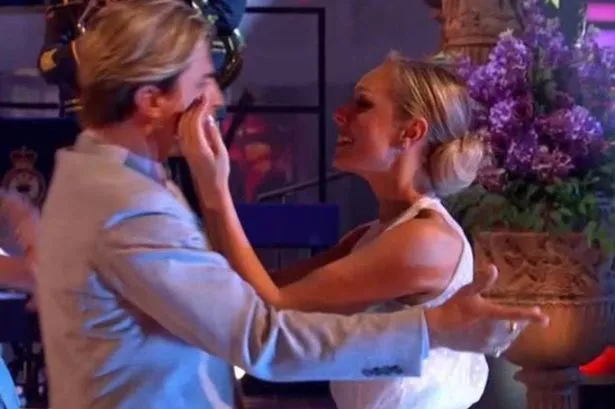Strictly Come Dancing fans were left in tears as they watched the results show
Strictly Come Dancing viewers were left reaching for the tissues during Sunday night’s emotional elimination show.
The evening featured a musical performance from James Morrison, belting out ‘Fight Another Day’, accompanied by a dance routine from Jowita Pryzstał and Neil Jones.
The Band of the Royal Air Force Regiment also graced the stage alongside the Strictly Professional Dancers for a group performance in honour of Remembrance Sunday, set to Sam Fender’s poignant track ‘Remember My Name’.
However, it was this particular performance that had fans welling up, with many taking to social media to express their emotions – and eagle-eyed viewers spotted that Amy Dowden was part of the special pre-recorded routine.
Amy is currently on a break from the show as she recovers from her second mastectomy, reports Wales Online.
One viewer posted on X, “Amy dancing recorded in August, then, hate these ‘Sunday’ shows and dances recorded months ago.”
Another fan gushed, “Love seeing Amy in the performance. I am sobbing.”
While another added, “Dancing to Remember My Name by Sam Fender on #Strictly making me VERY emotional.
“Not one for sentiment when it comes to war, but brass bands really do choke me up #strictly,” another viewer shared.
Yet another wrote, “That was a beautiful pro dance and the music was spot on, can’t believe I’m now in tears over strictly. I almost never cry, yet I’ve cried two shows in a row tonight!”
Tonight’s results saw the departure of one celebrity, as Harry Aikines-Aryeetey and Karen Hauer found themselves in a dance-off against La Voix and Aljaž Škorjanec.
Both pairs took to the floor once more; La Voix and Aljaž reprised their Foxtrot to Make Your Own Kind of Music by Cass Elliot, while Harry and Karen Hauer danced their Samba to Samba by Gloria Estefan.
However, it was a unanimous verdict as all judges opted to save La Voix, resulting in Harry being sent packing.
It was a poignant moment for Harry, and when quizzed by Tess Daly about his Strictly experience, he said, “I think, first things, I just want to thank Karen, genuinely, you have given me an opportunity to shine.
“You’ve understood my crazy brain. I’m a logical person, trying to dance – and obviously doing what I do – an Olympic sprinter and a Gladiator; now I’m trying to be a dancer.
“I just want to thank you so much for the time and effort, the hard work that you’ve put into me. You show up, you turn out. I want to thank everyone here. Literally, this has been a dream come true. This is a celebration. It’s a celebration.”
The Gladiator continued, “I spoke to my daughter and she didn’t like seeing her dad sad, and when she saw me sad last week, she was like, “Daddy, what’s wrong?’ and I wanted to show everyone that, no matter what happens, there’s always a silver lining.
“But this is an experience for me. So, thank you for this lovely gift, and at the end of the day, we carry on, we give it to them, and we continue to shine. Do you know what I mean?”
Karen also became emotional as she shared with Tess what being paired with Harry had meant to her.
She said, “I am extremely proud. We’ve had the best time.
“You’re such a gentleman, you’re a hard worker, you listen, and you get into those times where I don’t know what you were thinking, but you know what? I loved you in every kind of way because of the person that you are, and it was an honour to teach you, so thank you so much.”
Strictly Come Dancing is available to watch on BBC iPlayer.

